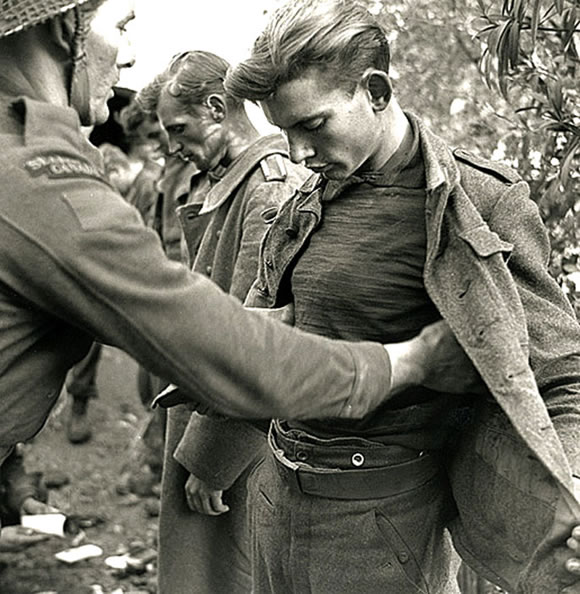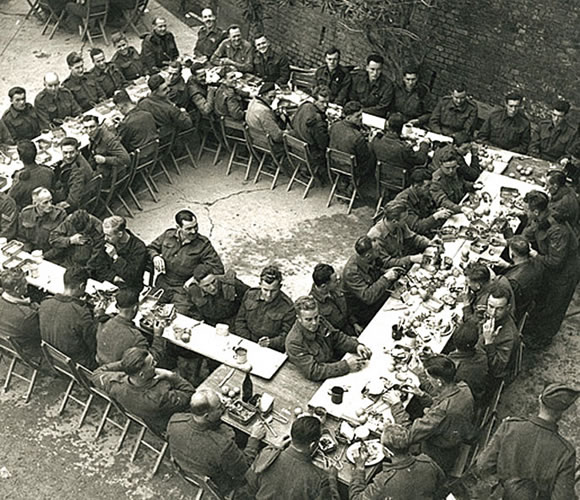Christmas in Ortona
By December of 1943, the Allies had reached the historic seaport of Ortona on Italy's Adriatic coast. The town was held by Hitler's elite paratroopers, whom he had personally ordered to defend it at all costs. The Canadian troops were mostly young volunteers in their twenties who revelled in liberating town after town as they quickly advanced up the eastern side of Italy. The Canadian troops met the Germans at the Moro River, less than seven kilometres away from Ortona. It was hoped there would be a day or so of fighting. Instead, the Canadians fought their way into the town for eight bloody days.
The battle of Ortona began on December 20. That December was the wettest on record. The Moro River had risen more than eight feet and the surrounding fields became seas of mud that clung to soldiers as they tried to advance against sniper fire, mortar, artillery and tanks. The Germans counterattacked repeatedly and often the fighting was hand-to-hand as the Canadians edged forward to Ortona. What the Canadians didn't know is that they were about to crash into a German defence line that the Germans called their “winter liene,” or winter line.
The streets of Ortona were narrow and lined with stone houses. The Germans had blocked off the side streets thus forcing the Canadians onto the only street wide enough for tanks, a highway running through the center of Ortona. Buildings had been blown up, creating piles of rubble which acted as road blocks for the tanks. It was a trap. As Canadian Sherman tanks proceeded down the streets, they were blown up. A tangle of land mines and booby traps were placed in the rubble, and snipers and machine gunners were positioned at strategic locations throughout the town. It was a battle for every single building on every street, for every block in every corner of the town.
The enemy used every trick and every weapon. Heavy artillery was placed in the ruins of buildings to provide cover for the German infantrymen. Basements were packed with explosives which could be remotely detonated by German engineers. The Germans blew up a building packed with Canadians and the only surviving Loyal Edmonton Regiment soldier was pulled from the building three days later.
The streets were killing zones. To protect themselves from sniper fire, the Canadians utilized a technique called “mouseholing” with great success. A demolition charge was moulded out of plastic explosive. The charge was placed against the interior wall of a house and soldiers would blast a hole through the wall, enabling them to advance through the adjoining buildings without being exposed on the street. The Canadians used mouseholing to attack house to house, clearing the enemy one room at a time. Sometimes, they cleared entire blocks without ever setting foot in the streets. The technique, which was so successful at Ortona, is still employed today in urban warfare.
On December 25, 1943, it was Christmas in Ortona. In a bombed-out church at Santa Maria di Constantinopoli, members of the Seaforth Highlanders gathered in shifts for a Christmas dinner a few blocks from the fighting. They had scrounged the essentials for this special meal—table cloths, chinaware, beer, wine, roast pork, applesauce, cauliflower, mashed potatoes, gravy, chocolate, oranges, nuts, and cigarettes. An organist played “Silent Night” and for a few moments there was a semblance of normality as the soldiers were able to sing these words amongst the raging war. But they had to return to the fighting. For some, it would be their last meal.
The Germans withdrew two days after Christmas. The Canadians achieved their objective, but at great cost. Ortona had been liberated, ending the month that would go down in history as "Bloody December.” It was the bloodiest month of war in the Italian Campaign with 213 Canadians dead during that Christmas week alone. The Canadians paid a terrible price during that Christmas in hell. The losses suffered by the Canadians at Ortona were nearly one quarter of their total casualties in the entire Italian Campaign.
- Date modified:


